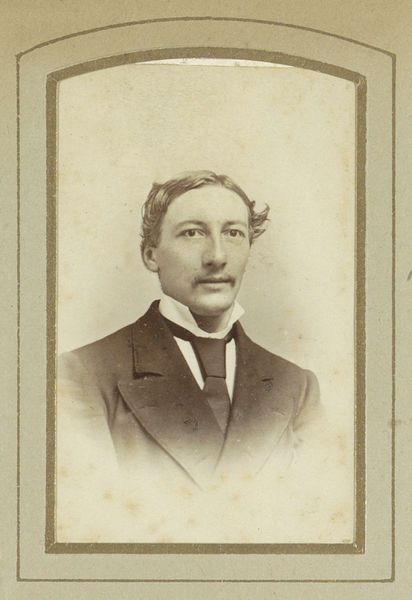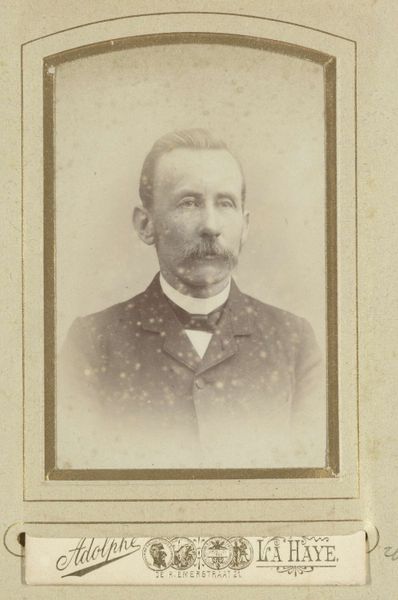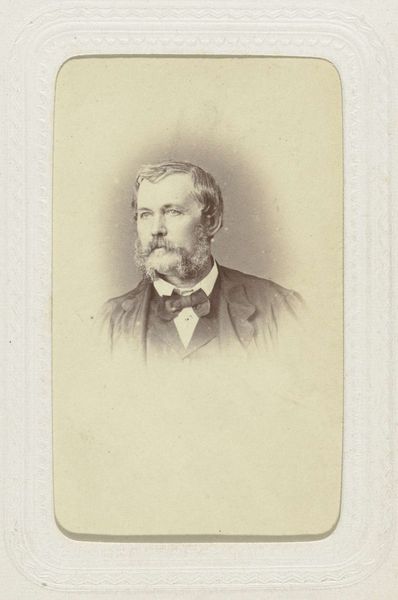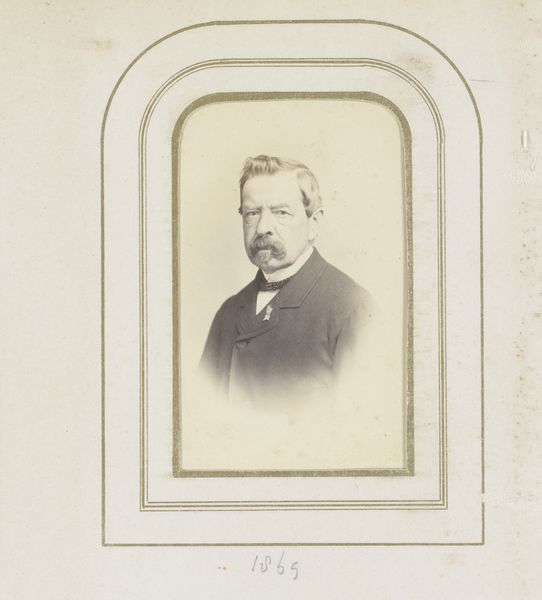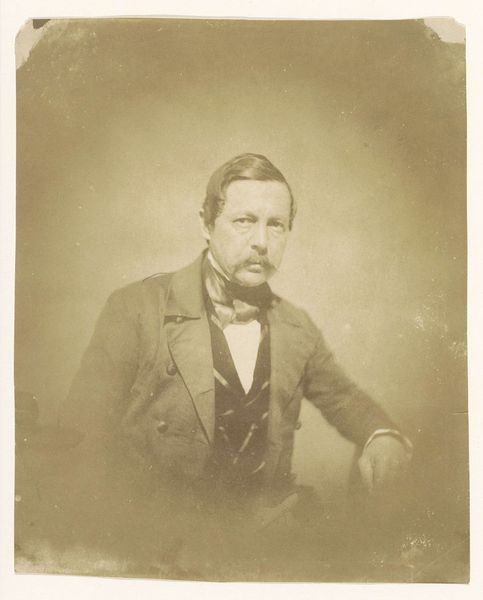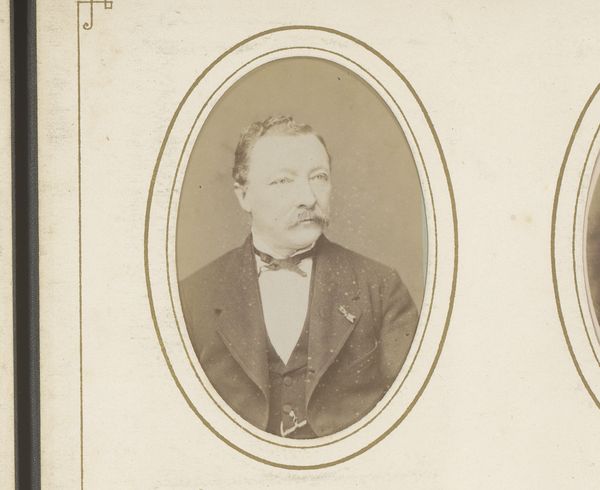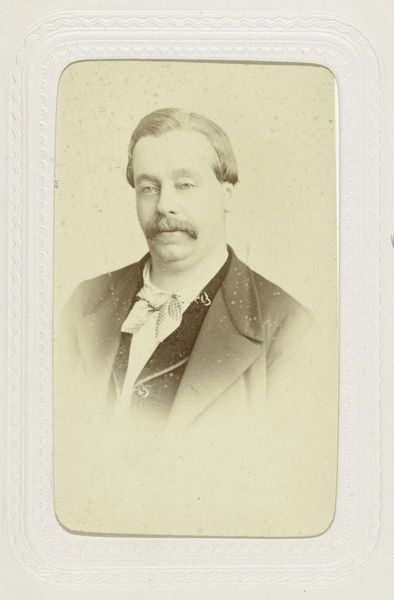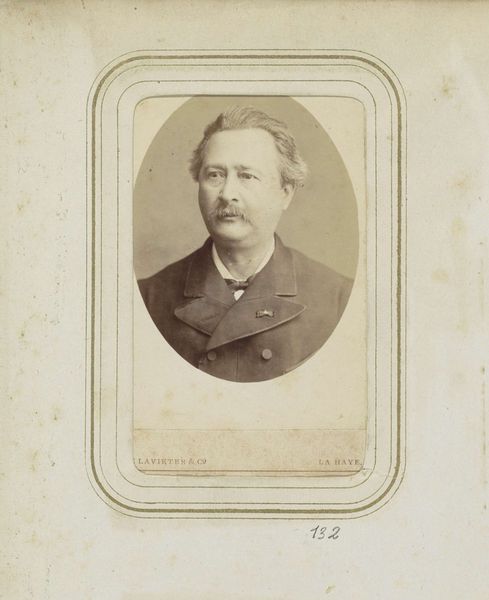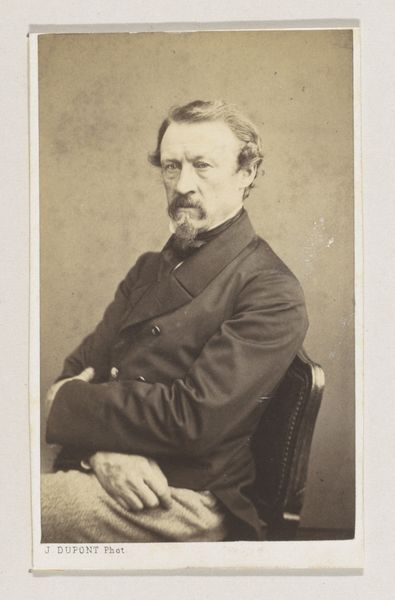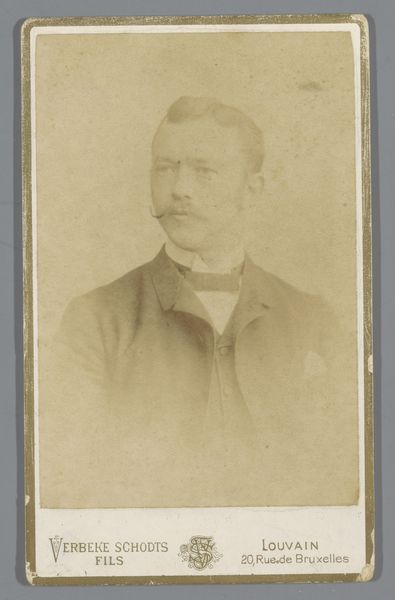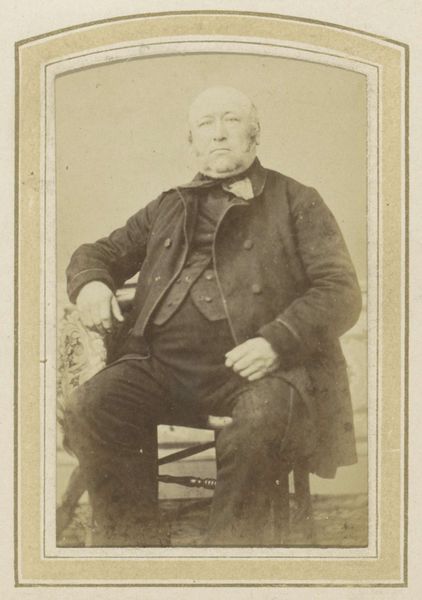
photography, albumen-print
#
portrait
#
photography
#
albumen-print
Dimensions: height 93 mm, width 62 mm
Copyright: Rijks Museum: Open Domain
Curator: Standing before us, we have "Portret van een man met een snor en een sik," a portrait created sometime between 1868 and 1880 by Wegner & Mottu. It is an albumen print, currently residing here at the Rijksmuseum. Editor: Immediately striking. The tonal range, largely sepia, seems to suggest the man exists, even now, caught in some ambered past. Note how his features emerge from an almost blinding void—his eyes and beard the visual anchors. Curator: Indeed, the photographers have used light and shadow quite purposefully to direct the viewer's gaze. The texture rendered by the albumen print lends a soft, almost painterly quality to what is, in fact, a chemical process. Editor: A chemical process reliant on human labor! Consider the layers of craftsmanship involved in producing this single image: glass plate preparation, the silver nitrate bath, the delicate act of printing. The sheen itself whispers of albumin derived from eggs – a crucial, if humble, element in photographic history. Curator: Precisely. Furthermore, consider the carefully constructed composition. The man’s slight off-center positioning and upward gaze give an impression of dignity. Semiotically, the beard, moustache, and formal attire also act as codes to construct the persona. Editor: I agree, though one could push against that construction. How many such portraits existed, made and bartered to project middle class status? What did the sittings entail for the sitter in labor and social performance, even on the scale of a small studio. Curator: Still, the surface holds allure. Observe the delicate modeling around the cheekbones and how the dark cravat creates a visual break, segmenting planes in the pictorial depth. Editor: And that visual break serves as a point of quiet resistance within the picture's implied ideology, no? Curator: An intriguing question. I find that the beauty, the tonality, and composition continue to beckon to the image's surface for aesthetic meditation. Editor: For me, the image asks for material study – how labor and the material culture of image production influenced both the making of such objects, but their original and ongoing cultural significance.
Comments
No comments
Be the first to comment and join the conversation on the ultimate creative platform.
